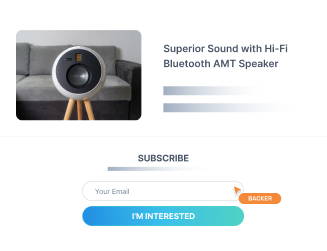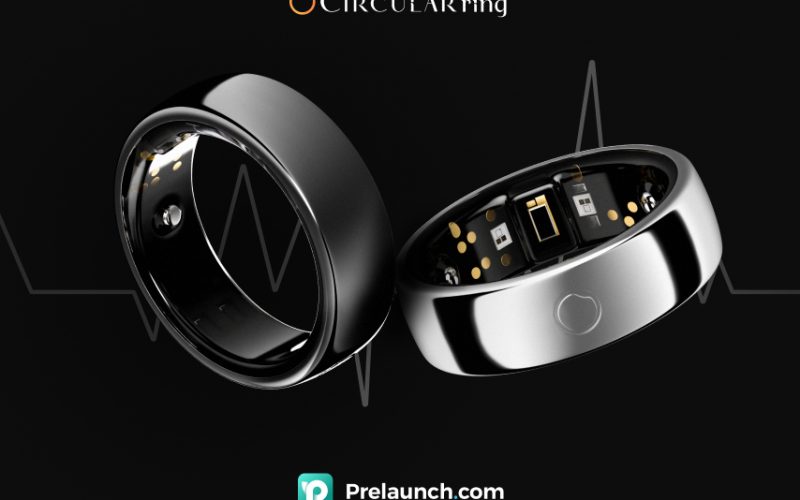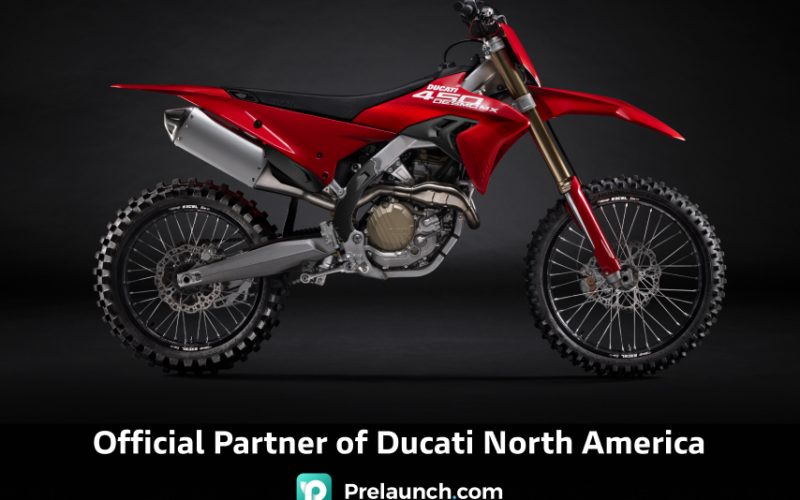Have you ever wondered why some products are super successful when they launch while others never catch on? Your answer is market interest!
It’s no secret, there is no single product creator who is not, literally, “in love” with his or her product. They know it’s good, they are sure that everyone will love it the same way they do. But the launch day comes and, well, things don’t look so great — ads are not performing, sales are down, costs are high, leads (if any) are not converting, and many more issues!
So what went wrong?
How come so many product launches fail even though their creators think they are awesome and the “next big thing”?
The answer is actually quite simple — and it has nothing to do with how good your product is. All that matters is whether that specific product has any market potential or not.
And this is where Prelaunch.com comes in, by providing unbiased and data-driven market fit prediction of a campaign’s success. Or failure!
It predicted the success of the Blanc Mask campaign — read about that in this case study — and here, we’ll explore how it predicted the failure of Multi-Glider.
Identifying the Right Positioning
The first step towards understanding market potential is to think about how you’re positioning your product. In other words, what the product is, who the target audience is, and where those two meet.
For Multi-Glider, we ran a positioning workshop with the creator and he insisted on focusing on the existing problems around plucking nose hair. In this context, we realized we could position Multi-Glider as a good alternative. Even though our research showed the importance of highlighting a clean shave — because of how seldom nose hairs have to be trimmed — the product owner chose to ignore these insights.
Design & Copy to Compliment the Position
The first variation of the page was based on the technical features of the Multi-Glider. In this version, we described its two primary features and went with a straightforward approach — it is a vibrating razor and nose trimmer in one.
The page was designed to highlight specific features and benefits, which were supposed to lure in men who are already using other razors. Both the design and copy worked in tandem to communicate how Multi-Glider was built to effectively trim nose hairs and provide a clean shave.
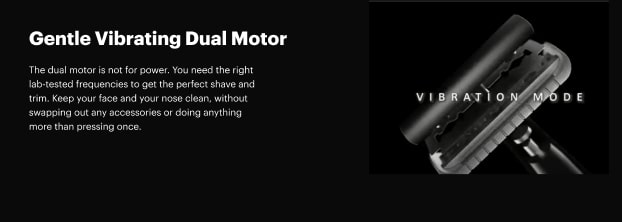
After a few weeks of testing, our data showed that the positioning did not resonate with our target audience. There was a low subscription rate and absolutely no reservations. This meant 2 bad things, that there was no market interest for a product like this, and that even if there was, nobody was going to buy it at that price!
With this data in hand, we convinced the product owner that we should try a different position. With this one, we moved the focus away from its technology and shone a light on the product’s aesthetics and ease of use.
This small change saw an 80% increase in market interest, and some reservations validated the price. But this was still beneath the benchmarks for a product in this niche and price range. So we changed the format of the page to focus on the problems with plucking nose hair, and how this trimmer could help.

Finally, we tested a position where the main highlight was centered on missing spots while shaving and Multi-Glider’s solution.
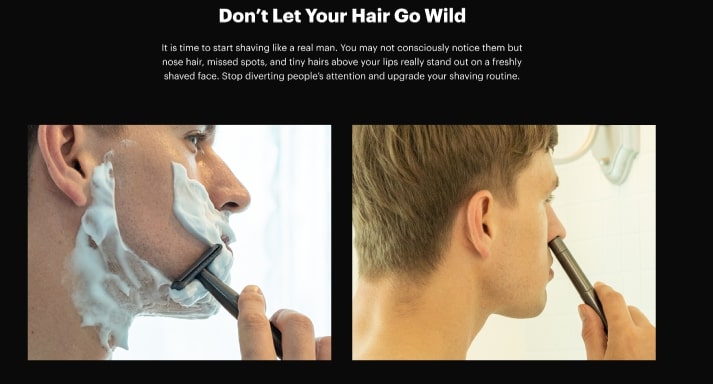
This turned out to be the best position, and it significantly improved market interest and price validation according to the 3,000 visitors that landed on the page.
However, the benchmarks had not been meant, and these higher subscription rates came at a high cost of conversion from ads…
Running Ads to Validate the Position
The fastest and easiest way to test your position and understand your market is by advertising. In the case of Multi-Glider, we decided to run ads with different positions to see if there was a significant difference in conversion rates.
The first campaign was designed to highlight the technical features and benefits of the product:
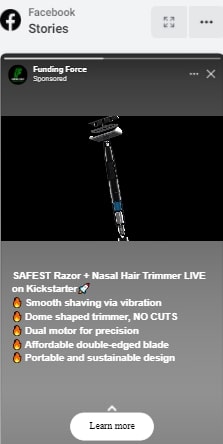
In the second, we tried to highlight the discount and value in the affordable price:
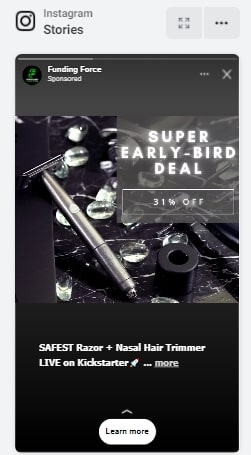
With the primary target audience of men aged 25-40, it was important to stand out from other razors, so a good deal was needed to capture attention.
Bonus Finding: Many competitors use photos of masculine men shaving but using just the product in a black environment emphasized Multi-Glider’s sleek look and brought in over a third of our reservees — that’s almost twice as many as the second best-performing ad.
Data Never Lies
There are many variables to test at Prelaunch.com. The platform has all the tools you need to test your market position before launching a campaign. Once you have done so, Prelaunch.com accurately predicts your market potential by calculating a data-driven product fit score to answer the million-dollar question — “How well will my product perform in the market?”.
It can take days or weeks before you’re able to understand what works for your product.
All the different positions, landing page designs, and copy seemed to show that there was some level of market interest, but conversion rates and price validation was not promising. Yes, leads were subscribing, but the cost per lead was $5.59, which was way above the usual benchmark defined by 100s of prelaunches within the same price range. This was a big red flag for us!
Next, we tried to scale the results and saw that the top converting ad was the salesy copy with a great deal. In these cases, it’s common that the reason people are clicking is that they’re more interested in the deal than the product itself.
After nearly 3 variations tested, lackluster subscription rates (19%), lack of email engagement, and low reservation rates (0.05% from visitors) we decided to let the creators know that the product has no market, and even if they launch, it will be a failure, and probably won’t generate over $10,000 in revenue.
But they decided to move on with their product and launched the campaign on Kickstarter. Guess how much they raised…
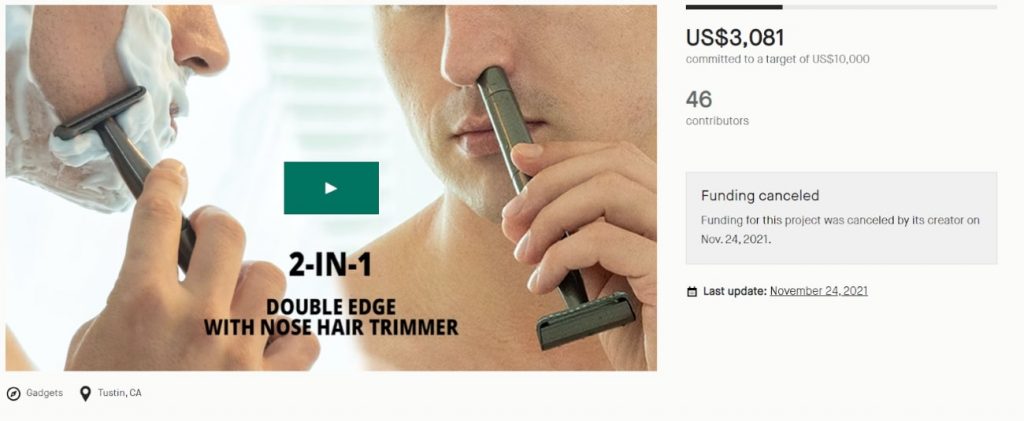
Prelaunch.com identified that the market wasn’t interested in buying a 2-in-1 razor and nose hair trimmer at this price. And when it launched, only 46 people backed it for a total raise of $3,081.
This was not the launch the creator had hoped for. But it was the launch that Prelaunch.com predicted. Had the creator listened to PreLaunch’s predictions, they could have saved time and their marketing budget and worked on improving the product in ways that the market would respond to it.
Products that failed once, sometimes only need some slight tweaking to be successful in round two! And many creators validating the products on Prelaunch.com do just this. If their idea is unsuccessful on PreLaunch, many of them celebrate — for all the saved resources and headaches that come with a failed launch — make changes to the product or scrap it entirely, and come back again.
When it comes to how Prelaunch.com can help you avoid possible product failures, there are basically three main areas in which Prelaunch.com shines:
- Defining the proper marketing position
- Identifying the right pricing strategy
- Setting up the long term messaging and visual communication
Once the Prelaunch.com platform has recommended you to go with one position, message, or image over another, it gives you confidence that your overall marketing strategy is on the right track. This saves valuable time for your team while allowing them to focus on other activities.
In addition, Prelaunch.com uses a system of algorithms to compare your product with similar ones in order to come up with the optimal price range. This information can be vital from both a marketing and a financial point of view.
To see how it has predicted the success of some recent launches, click here.


